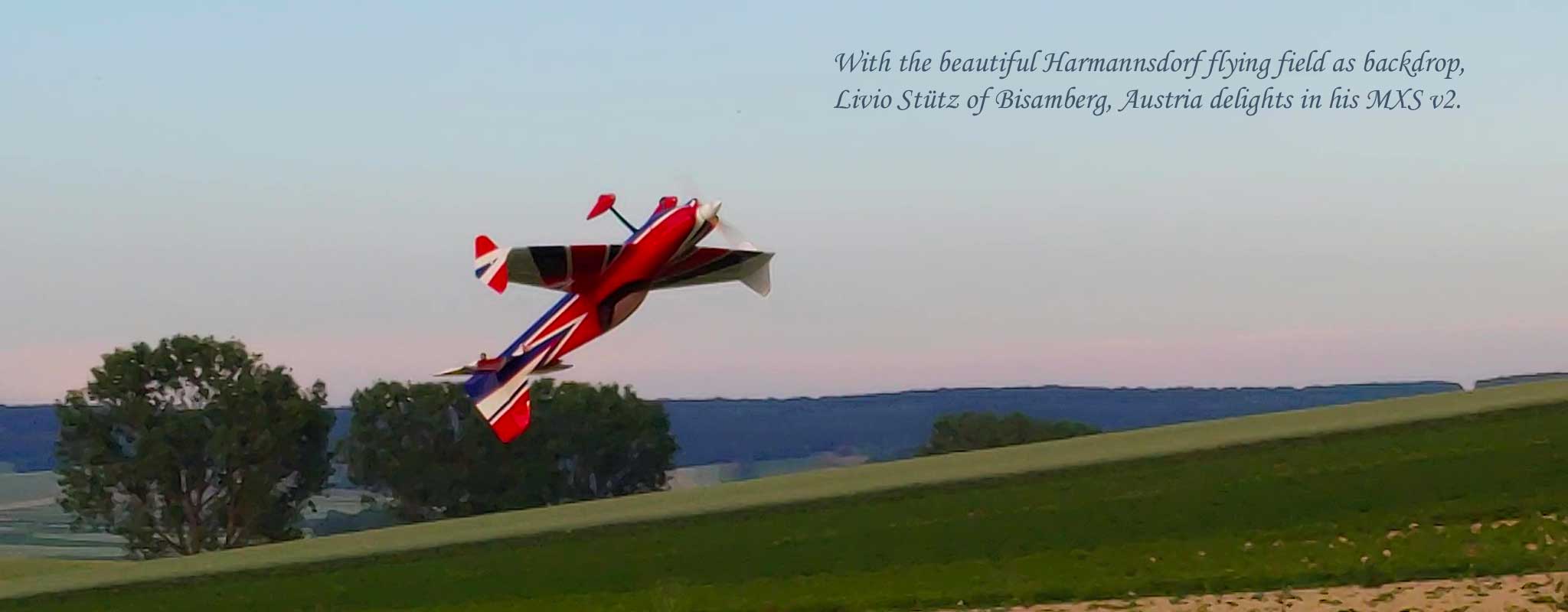
Extra NG, Gamebird, MXS, Turbo Raven and more. Basically, the hits keep coming from the team at Extreme Flight because it's one superb 60-class model after another . . . and each is seemingly better than the last! As for the enduring popularity of their models? Perhaps it's because they can be fairly summed up as; adrenaline on demand without breaking the bank!
With flying characteristics described by some as better than sex (or at least, the most fun to be had with your pants on), we're pleased to focus your attention on three servo solutions - each optimized to suit your style.
- DS110CLHV - ideal if you grok gyros
- DS160CLHV - maybe simply ideal
- DS205BLHV - when only the best will do
Three case studies
Extreme Flight offer three pretty good servo selections for their 60-class models. These being the popularly priced Hitec HS-7245MH, the high performance Savox SV-1260MG, and powerful MKS-HV747. However, we feel we bring something to the table that's perhaps missing from consideration.
Our goal with this brief 5-minute read is to bring three ProModeler alternatives to your attention because customizing your model for your style of flight means servo selection is never one size fits all. First up . . .

DS110CLHV - because with gyros, it's all about response, or raw speed!
One of the strongest arguments to be made in favor of the DS110CLHV is that offered up by Austin Brammer, a resident of Tampa, FL. Austin, or Doc as he's known, is to be found flying nearly every day of the week because of the year-around flying weather. And Doc loves the Aura8 gyro because, in his words, 'It damps the effects of the wind gusts without interfering with my control input'.
Doc adds, 'The Aura8 make a 60-class models fly like a much larger aircraft!' And guess what? He's right! How do I know? Simple, because at Doc's urging, I bought one. Then another, and another. In fact, Doc's responsible for the fact I own four Aura8 - as in for my own personal fleet of sweet flying EF 60-class models. These being the Turbo Bushmaster, Extra 300, and a Turbo Raven (plus one in a 52" Extra) . . . hmmm, come to think of it, maybe somebody they should be paying this guy a commission!
Anyway, for optimal performance, gyros work best with a fast servo. So we'll begin by discussing our fastest servo - and fastest in the class, e.g. as offered by anybody! Many folks choose to equip their models with gyros because they've utterly revolutionized 3D flight and for best results, you want a fast servo. The DS110 delivers this in spades.
Why? It's because speed was our design-focus. These days the technological elephant in the room is gyro response and by optimizing for what gyros bring to the game (sensing and responding before flesh and blood can even sense it needs correcting) we felt we could offer something better.
After all, considering swinging a control surface 35° in each direction takes time (and this is what 3D is all about), then it follows a faster servo makes things easier for you as a pilot, right?
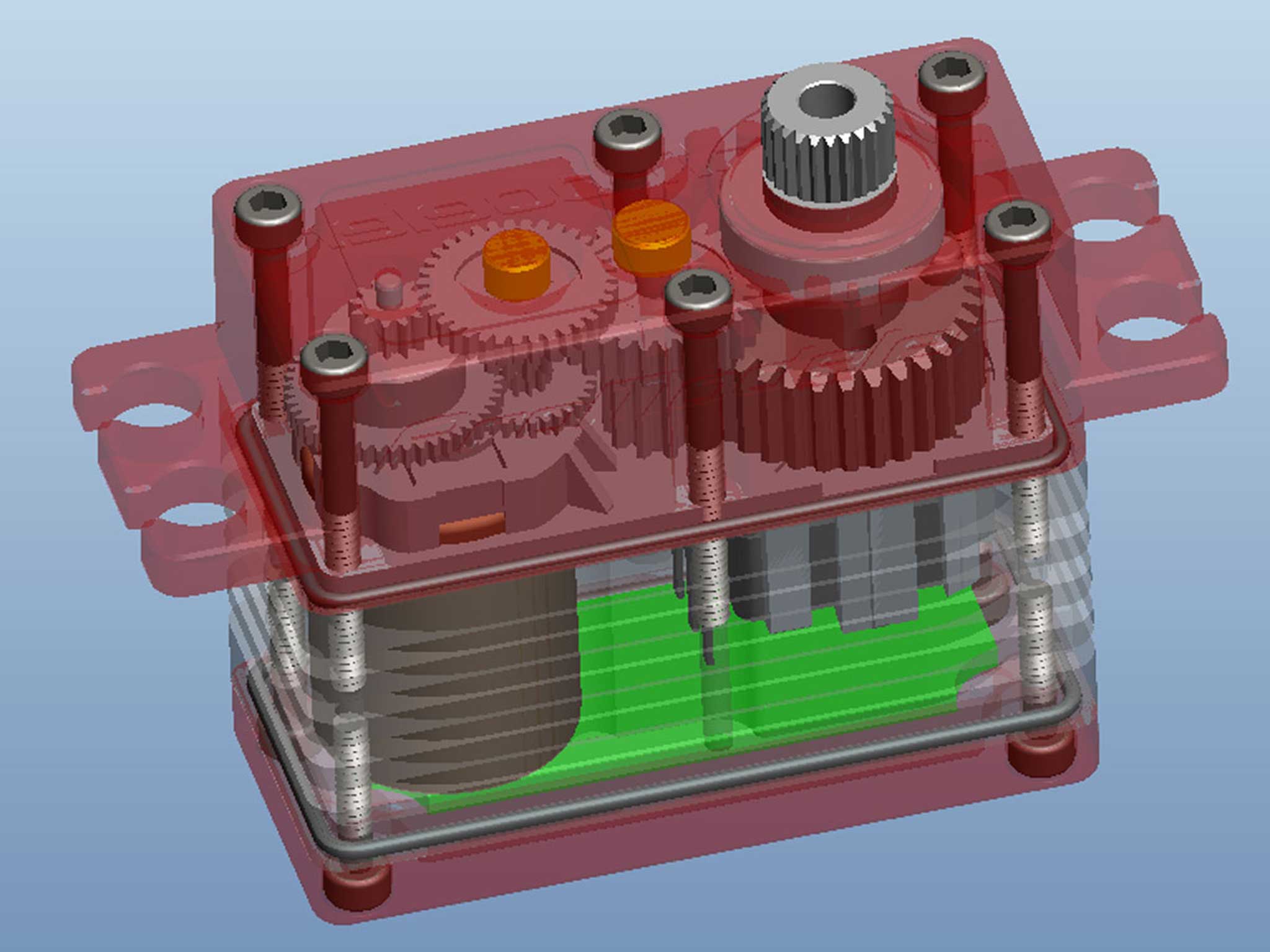
- This render shows what goes inside, 13 o-rings, bronze inserts, the works!

What recommends the DS110CLHV for those who like using a gyro? Simple! The answer is to be found within the specs, where your focus should be on the speed instead of torque. How fast is it? This servo transits at an astonishing 0.03sec/60, which is faster than you can possibly sense. Point being, it's perfectly matched to responses generated by the MEMS sensor within the gyro because that's what we've designed it to do.
Better still, we have aggressively priced it right with the popular Hitec HS-7245MH, yet at the same time, it outmuscles theirs by a fair margin (110oz-in vs. 89oz-in, or about 20% more power).
But make no mistake, the DS110CLHV servo is all about speed, where it simply smokes the Hitec product 0.03sec/60° vs. 0.11sec/60° (or about 300% faster).
We trust we've earned your attention!
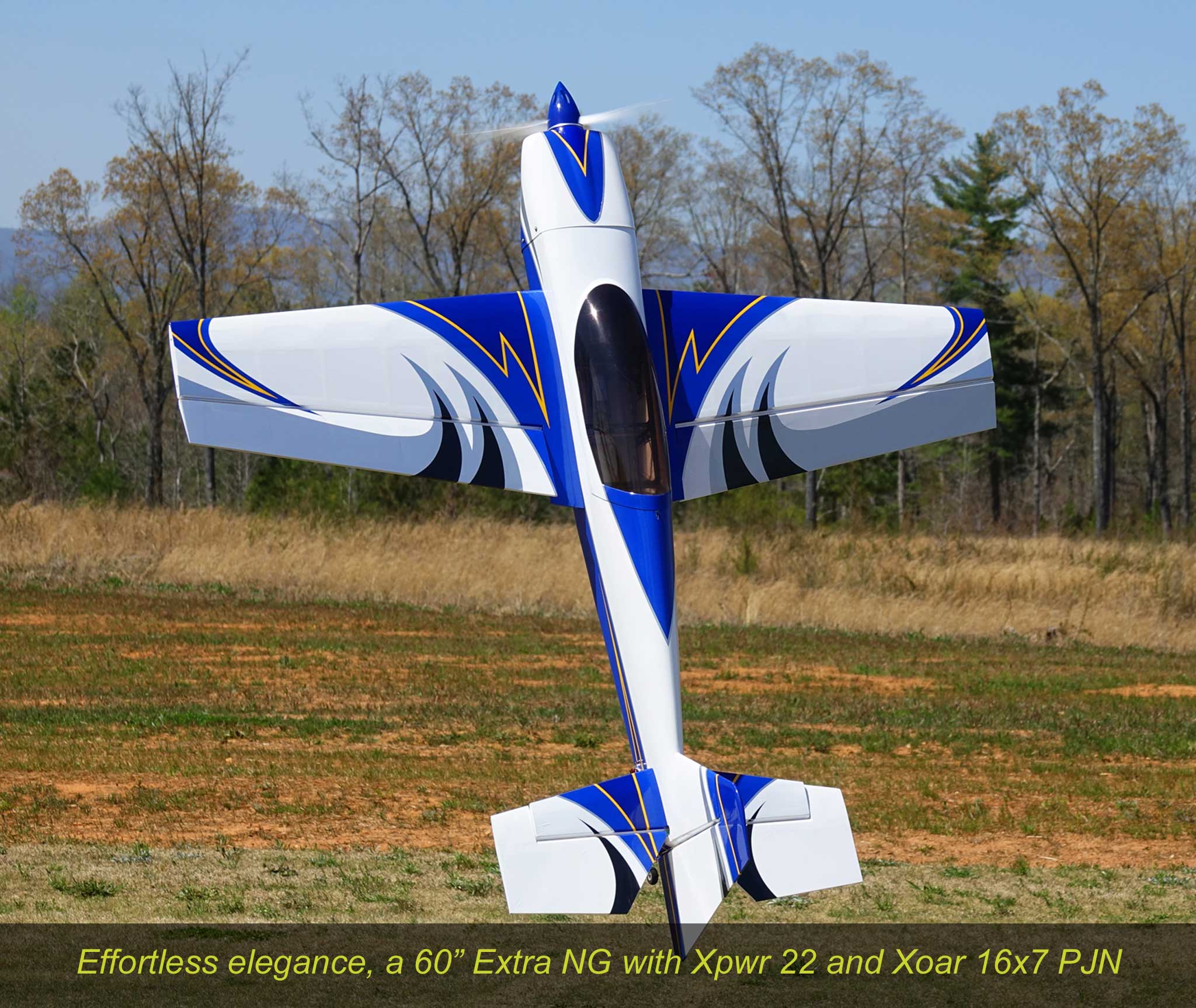
- Ailerons are 35% of the wing, elevators 60% of the stab - swing 'em fast!

To recap, gyros respond to external inputs, perhaps a wind gust. They sense and respond before you can even see the need. By commanding a near imperceptible correction from the servo before you realize it, the gyro works like magic! But to work optimally, then the faster the servo the better the response. So a servo that's really, really fast delivers a better benefit. The ProModeler DS110CLHV is the fastest at any price!
So at heart, the DS110CLHV is a servo, which has been optimized for gyro use. And take note; at 110oz-in this servo produces 20% torque than the least expensive recommended servo, while being 3X faster. Both powerful enough, and faster than any other by a mile is a nice combination - does this make sense?
So if you favor the use of a gyro, we believe this alone recommends the DS110CLHV for your consideration. Anyway, next up . . . let's eyeball what happens when you add brawn to your considerations. This is because the next servo we'll look at is still fast enough to benefit when using a gyro, but is also 50% more powerful - yeehaw!

DS160CLHV
The DS160CLHV is appreciated by many pilots for both its power and speed. In fact, it's neck-in-neck, which is the most popular for these 60-class models, the DS110CLHV or the DS160CLHV.
Crisp centering is frequently mentioned by top pilots (and if we're being frank, because EF pilots are often head and shoulders more skilled than other pilots in their club, they are usually the early adopters who introduce sport pilots to ProModeler in the first place). Anyway, often cited about the DS160 is an appreciation of this super mini's tremendous torque, which lets you perform the harshest of maneuvers.
For example, rifle rolls and walls (maneuvers requiring bucket loads of torque). Believe me in this, if nothing else, you'll do these maneuvers with much greater ease when using a more powerful servo!
A strong competitor is the nicely made Savox SV-1260MG. Theirs is a great servo and we're honored to even be in the conversation. Especially as theirs makes a shade more torque (166oz-in vs 160oz-in) and is a little quicker (0.055sec/60° vs. 0.06sec/60°). However, on the flip side, ours is both lighter (and grams add up when you multiply by four servos), and costs less. By way of comparison, cost-wise, theirs is priced more like our DS205BLHV.
Thing is, when you step up to the kind of money the 1260MG commands, the ProModeler DS205BLHV delivers more torque, better speed, and enhance durability through the brushless motor (these last 5X longer), but more about it, later!
Point being, you can save some serious money by opting for the DS160CLHV instead of the 1260MG. So unless your money grows on trees, this is kind of important, agreed?
Next, let's see why ProModeler perhaps earns your business without any consideration of bothersome facts regarding superior performance.
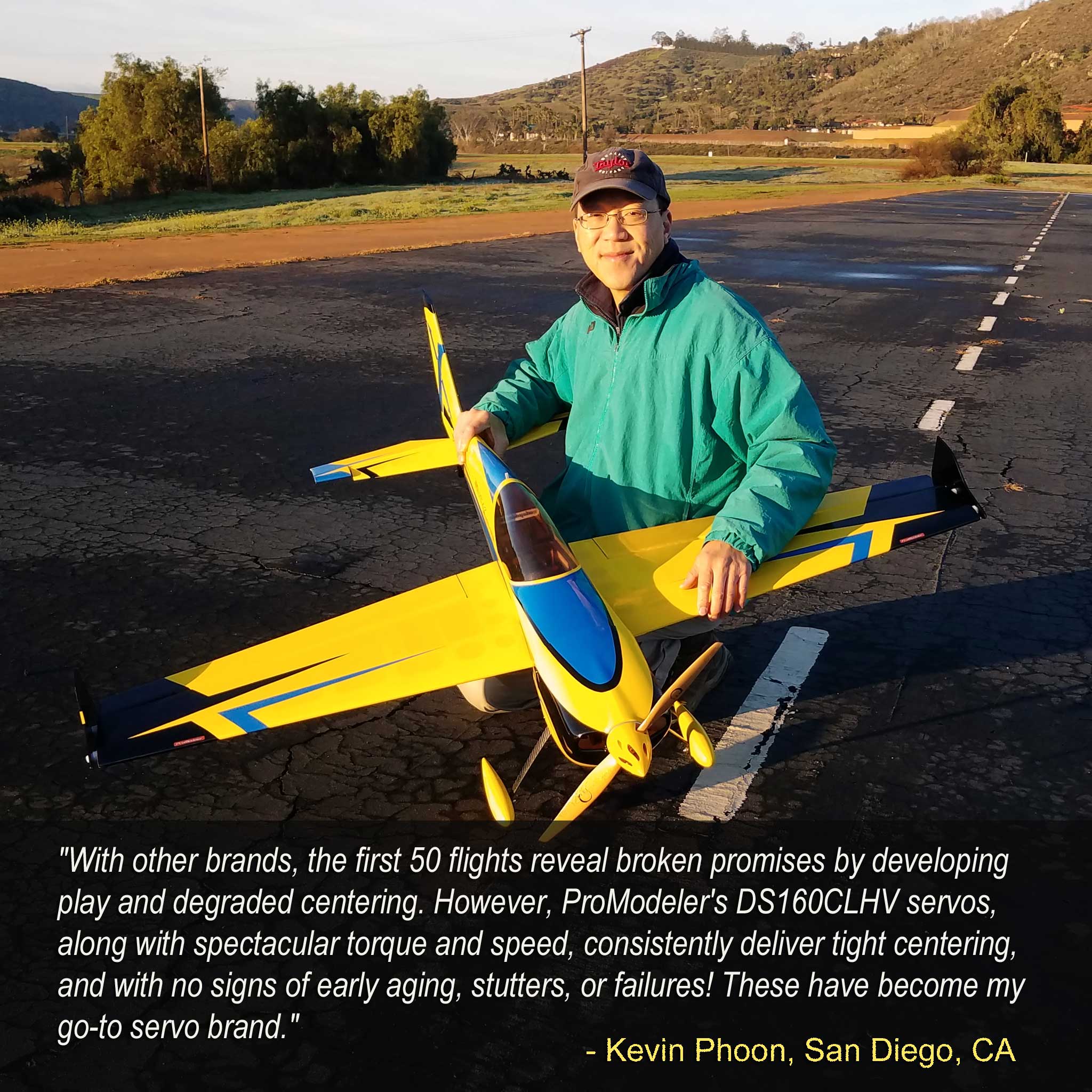

Let's cut to the chase. What 'really' differentiates a ProModeler servo from the competitors? What makes them better is unlike hobby-grade servos, they're built to meet military standards (and subjected to these tests).
MIL-STD-810G-Part 16
- Shock - Test Method 516.6
- Vibration - Test Method 514.6
- Rain - Test Method 514.5
In part, this is due to the requirements of our primary customer. However, because we're modelers and have knocked a servo off a workbench, experienced crashes, and know a thing or two about vibration (plus how a summer afternoon pop-up rain shower may drench a model before landing), it means these tests are important for civilian users (modelers).
Point being, if you're looking at another servo, one which offers similar performance and pricing - but - hasn't been tested to military standards, then servos meeting MIL-STDS are always better (even if you don't need the benefit their enhanced durability delivers right now).
However, beyond making servos expressly designed to survive the abuse encountered in the real world, there are important ownership considerations worth mentioning with a ProModeler servo. For example, many are surprised to learn there are bronze inserts within the polymer case. These, for reinforcing where the steel gear shaft fit - hard points in essence. Makes for a twofer, e.g. the benefit of lighter weight with the durability of an alloy case!
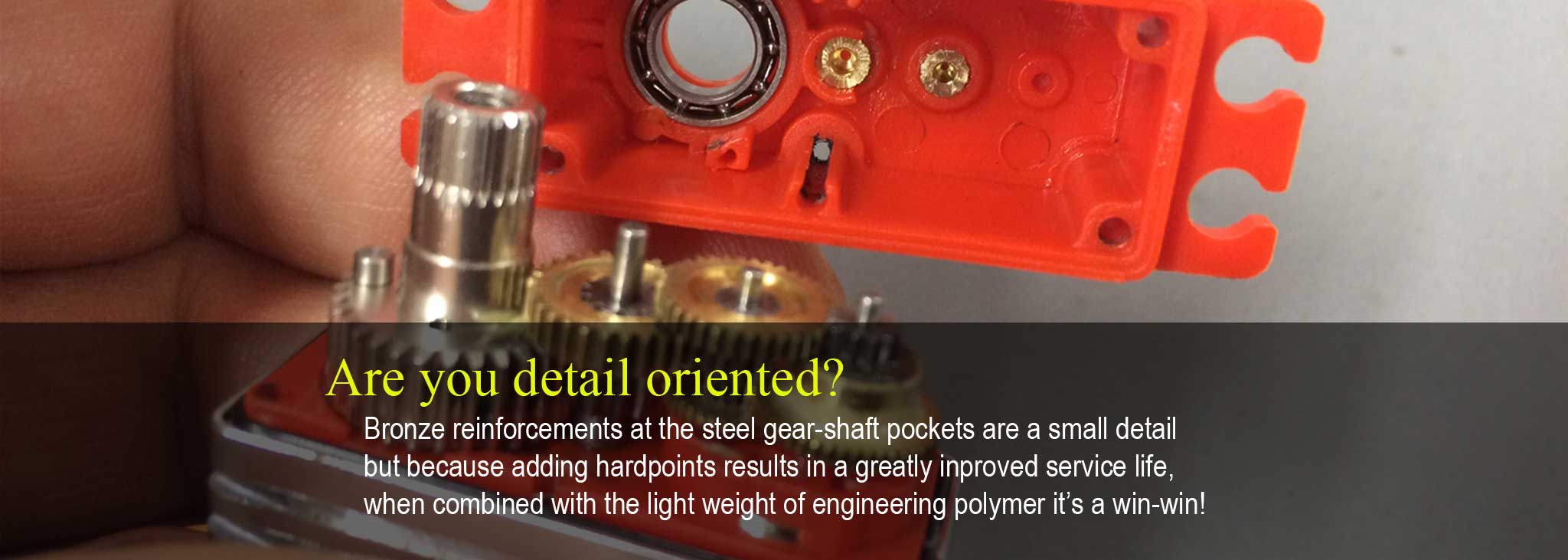

So you consider your servos to represent an investment? If so, then ProModeler servos are worth your consideration not just because they outperform the others, but because they're built to last longer. And the thrifty amongst us will especially recognize what receiving good value means in addition to receiving top level performance. Honestly, in this regard, it's well recognized your ProModeler servos really deliver, and here's why.
First, many modelers immediately notice the cooling fins machined into the case. All else being equal, cooler components last longer, right? But beyond this, even if you're not an electrical engineer, you'll appreciate other small touches - ones which are otherwise invisible.
Second, there's the matter of the 13 o-rings which seal the case. They're between individual case components, and at the output spline shaft, and beneath the heads of the ten grade 12.9 Allen head screws (used to secure the DS110 and DS160 servos together). And these thread into aluminum instead of plastic!
Third, there's how we protect the PCB from vibration with a conformal coating (instead of a cheapo square of foam rubber). Also referred to as potting compound in the civilian world, we just call it monkey-snot. Why? It's because it's such a sticky smelly mess to apply. But totally worth it!


So why do we bother applying monkey snot? Simple, it's because once applied to the PCB, it oozes between components and set. This is the secret sauce behind our servos thriving in harsh high-vibration environments. Bottom line? This is an aerospace-grade technique, and one which also help makes ProModeler servos more valuable to you by prolonging service life.
After all, while they're destined for an electric model right now, who is to say - perhaps a few years from now - you don't choose to race high vibration Formula 1 models, or perhaps are attracted to helicopters? Thus, instead of focusing on just one thing, your ProModeler servos are versatile enough for wherever your heart may some day lead you.
So beyond performance, ProModeler is really about delivering good value!

DS205BLHV
The final piece of the puzzle for defining the best servo to suit your style is the DS205CLHV . . . this is unquestionably our best for this class of model.
Torque-wise it's on a par with the lovely MKS-HV747 (205oz-in vs 208oz-in). However in the speed department we blow their doors off because ours transits 'much' faster 0.052sec/60° vs 0.13sec/60° . . . so it's more than 2X faster, which is a day and night difference! If we're being honest, it's a difference even a mediocre pilot can easily feel.
Where? Well, it's especially easy to discern with timing maneuvers like rolling Harriers. But also, with maneuvers, which requiring a deft touch, like torque rolls (where the power to move the surface quickly means it's easier for you to make fine corrections).
Anyway, we could yap endlessly about this servo but we'll respect your time and let Natalio, a professional pilot, speak for us . . .
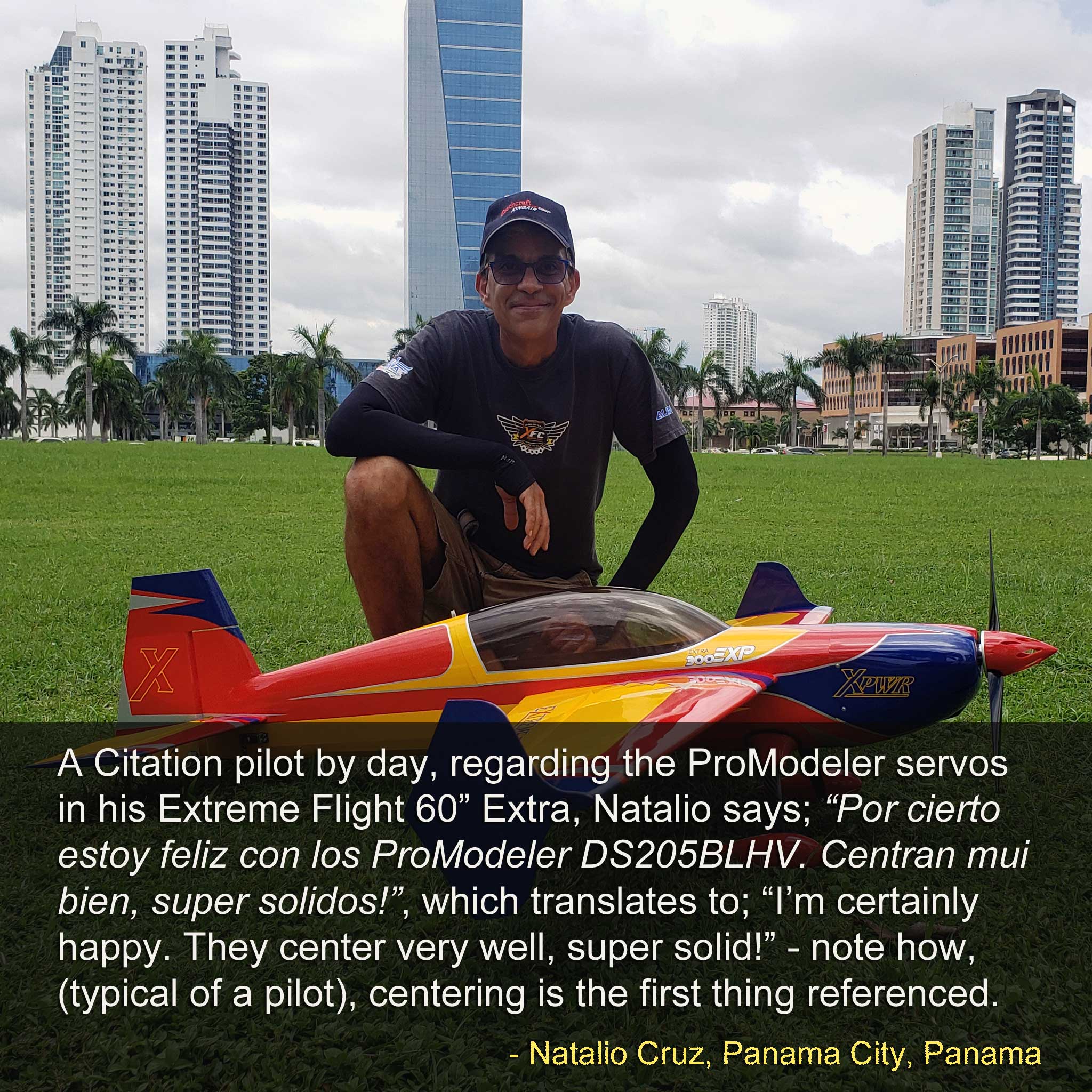

Summary
So when building a world class 3D model aircraft from the likes of Extreme Flight, then ProModeler offer you three solid servo alternatives for customizing your experience. Fast for gyros, powerful for the aggressive, and both!
These range from the stupid fast DS110CLHV, which is optimized for gyros, to the stout DS160CLHV, which has the muscle to power your aircraft through aggressive maneuvers like a wall or rifle roll. Then there's our money-is-no-object DS205BLHV, the best we know how to make.
Note; in the interest of full disclosure, there's one other mini-class servo, which is considered overkill - but - that some amongst you may wish to investigate, the DS355CLHV (yes, 355oz-in of torque from a mini makes it a real monster). Agreed, it's total overkill, but it exists for a reason, capice?
Anyway, while we could say these three are good, better, and best, in in truth they're all best in class. Your job is figuring out which best suits your style of flying! Easy peasy, eh?
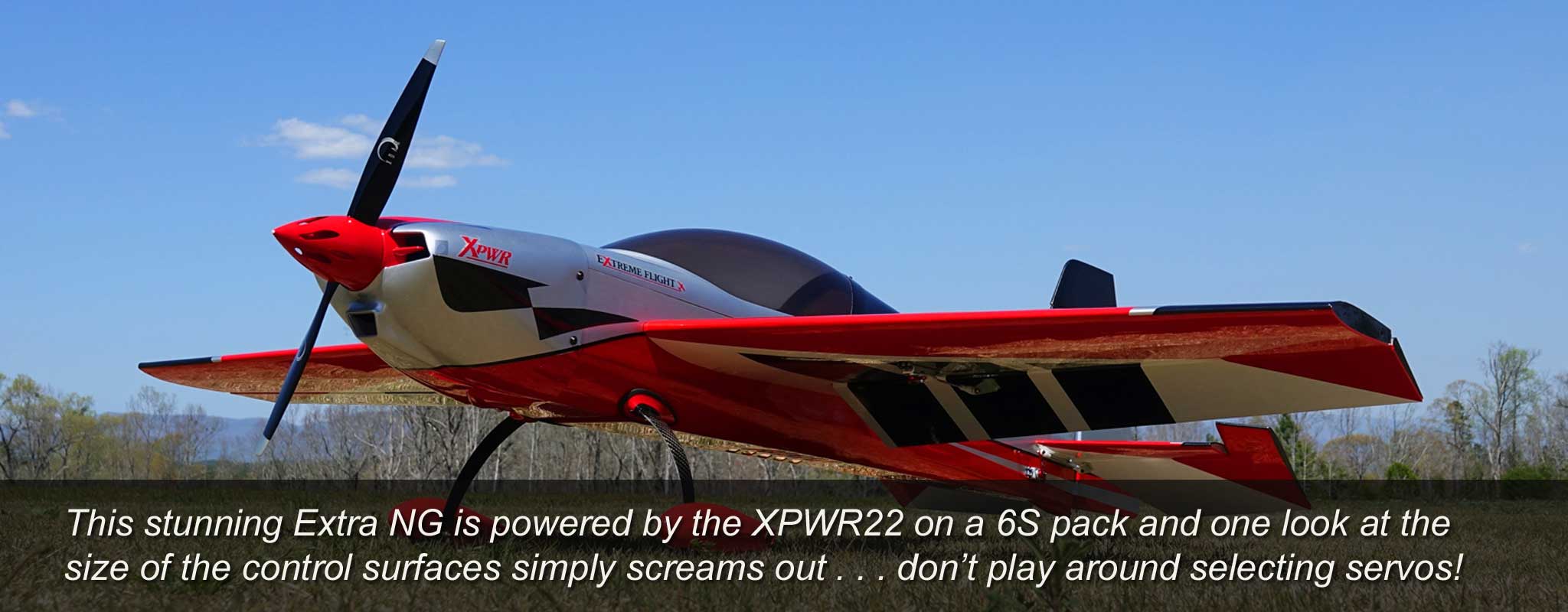

Still have questions? Call us at 407-302-3361 and we'll try to help you!